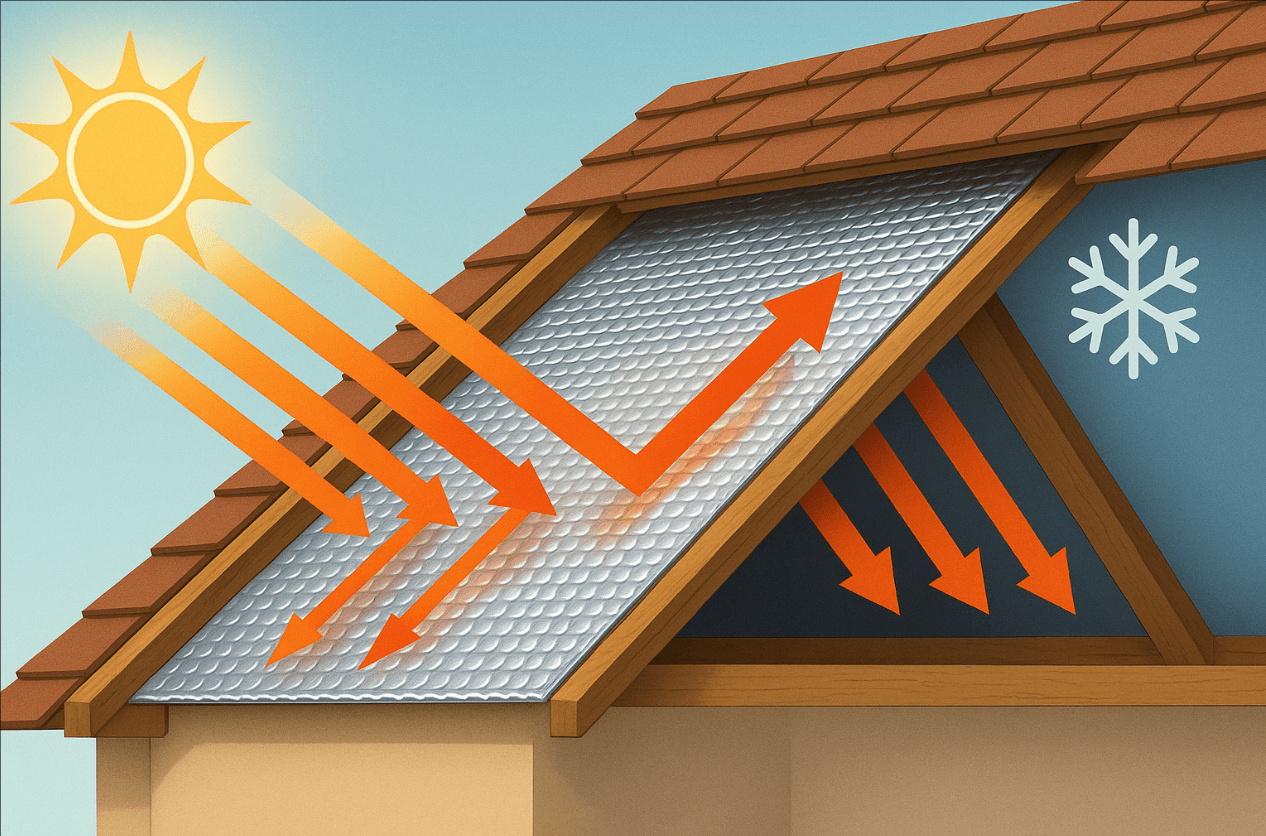Can Double Bubble Reflective Foil Insulation Save Energy?
Energy bills rarely go down on their own, and every wasted kilowatt shows up in a contractor’s profit column or a homeowner’s monthly statement. Can double bubble reflective foil insulation tackles the problem from two angles—radiant reflection and built-in air-gap resistance—making it an increasingly popular choice for roofs, walls, crawlspaces, and even HVAC ducts. Wellco Wholesale, a factory-direct supplier trusted by trade professionals and retail buyers alike, keeps this material in stock by the pallet so projects of any size can start without delay or markup surprises.

What Is Double Bubble Reflective Foil Insulation?
How the “double bubble” structure works
Picture two layers of tough polyethylene bubbles laminated between polished aluminum foil sheets. The bubbles create a sealed thermal break while the foil surfaces bounce radiant heat away. Unlike single-layer radiant barriers, the twin rows of bubbles maintain their shape under compression, so the insulating air pockets don’t collapse during installation.
R-Value vs. Emissivity: Why Both Matter
Most insulation charts focus on R-value, but reflective products add another dimension: emissivity, or how readily a surface emits radiant energy. Independent ASHRAE testing shows emissivity values as low as 0.03 for quality foil, meaning up to 97 % of radiant heat is reflected instead of absorbed.¹ Combining R-value (from the air pockets) with low emissivity gives the composite assembly performance many fiberglass batts can’t match at the same thickness.
How Can Double Bubble Reflective Foil Insulation Save Energy?
Controlling the Three Modes of Heat Transfer
-
Radiation – The foil skins act as radiant shields.
-
Conduction – Air trapped in the bubbles slows molecule-to-molecule transfer.
-
Convection – When installed with a ¾-inch air gap, convection currents are minimized, boosting total system R-value by 1–2 points.
Performance in Hot and Cold Climates
-
Summer: A Florida State University field trial on attic retrofits recorded roof-deck temperatures 30 °F lower under double bubble foil, cutting A/C runtime by 15 %.²
-
Winter: In Saskatchewan, test walls fitted with the same product lost 18 % less heat overnight than control bays insulated only with fiberglass, thanks to reduced radiant escape toward the cold exterior.
Real-World Results and Data
Case Study: Anonymized Commercial Greenhouse Retrofit
A 40,000 ft² greenhouse replaced aging polyethylene film with bubble foil on end walls and under the roof purlins. Utility-meter data supplied to the local rebate program confirmed an 18 % drop in natural-gas consumption, yielding a simple payback of 14 months—even before incentives.
Expert Insight & Industry Statistics
“Radiant barriers are often overlooked, but when paired with an enclosed air layer they become a hybrid insulation that competes with much thicker materials,” notes Dr. Lina Ortega, Building-Science PhD and ASHRAE fellow. The U.S. Department of Energy estimates reflective insulations can trim annual HVAC costs 10–20 % in mixed climates, especially on metal-frame buildings.³
Installation Best Practices
Ideal Applications: Roofs, Walls, Crawlspaces, HVAC Ducts
-
Roofs: Staple to rafters, foil side down, leave 1 inch air space.
-
Walls: Furring strips create the required cavity; finish with drywall or metal siding.
-
Crawlspaces: Foil faces the living space; seams sealed to block moisture.
-
HVAC Ducts: Wrap exterior, overlapping seams by 2 inches and taping.
Pro Tips for Contractors & DIYers
-
Use a sharp utility knife: scissors crush bubbles.
-
Seal every seam with approved aluminum tape to maintain the vapor barrier.
-
In humid regions, install a permeable house-wrap on the exterior side to manage condensation.
-
Always verify local code requirements; many jurisdictions now recognize ASTM C1224-compliant bubble foil as a stand-alone insulation layer.
Cost, ROI, and Purchasing Considerations
Upfront Cost vs. Long-Term Savings
Material runs USD 0.25–0.40 per sq ft in bulk, slightly higher than fiberglass batts but far cheaper than spray foam. On a 2,000 sq ft attic, the extra material cost (~USD 200) is typically recouped within two cooling seasons according to an Oak Ridge National Laboratory payback calculator.
Buying Quality Products in Bulk
Wellco Wholesale leverages direct-from-factory relationships to bundle bubble foil rolls with complementary tapes, reflective accessories, and cargo-ready packaging. Contractors report 8 % lower landed costs versus piecemeal ordering, and small DIY customers can still tap the same inventory without a minimum-order penalty.
Conclusion
Double bubble reflective foil insulation works because it blocks radiant heat, traps conductive loss in air pockets, and limits convection with a built-in gap. Backed by real-world savings data and rapid payback, it’s a smart upgrade for new builds and retrofits alike. Ready to spec or buy? Contact Wellco Wholesale today for datasheets, pricing, or a turnkey project quote—and start watching those energy numbers fall.
Frequently Asked Questions
Q1. Does bubble foil replace traditional insulation completely?
It depends on local code and climate. In warm or mixed zones, it may meet requirements alone; in very cold regions it often complements batts or spray foam.
Q2. Can I install double bubble foil over existing fiberglass?
Yes. Stapling it to rafters or joists above current batts creates a reflective radiant barrier that boosts overall system performance.
Q3. Is the material safe around electrical wiring?
The polyethylene bubbles are non-conductive, but because the foil faces are metallic you should keep 2 inches clearance from bare conductors and follow NEC guidelines.
Q4. How long does it last?
When kept dry and uncompressed, foil-bubble products routinely exceed 20 years in service with minimal degradation in reflectivity.
Q5. Does double bubble foil create condensation problems?
Proper installation with sealed seams and, in humid climates, a vented exterior surface prevents moisture from accumulating on the foil.

